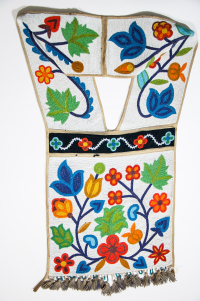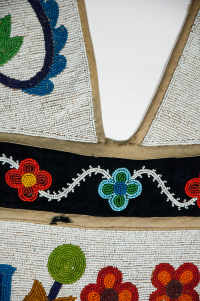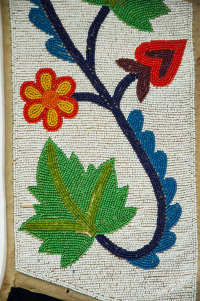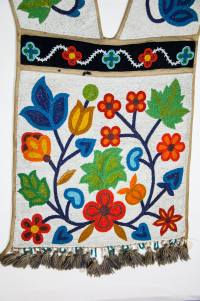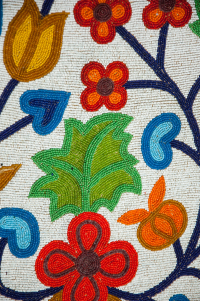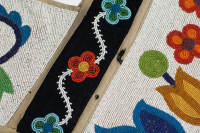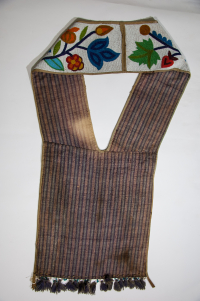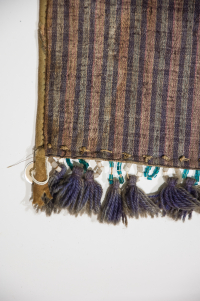Bandolier bag
Bandolier bag
Bandolier bag
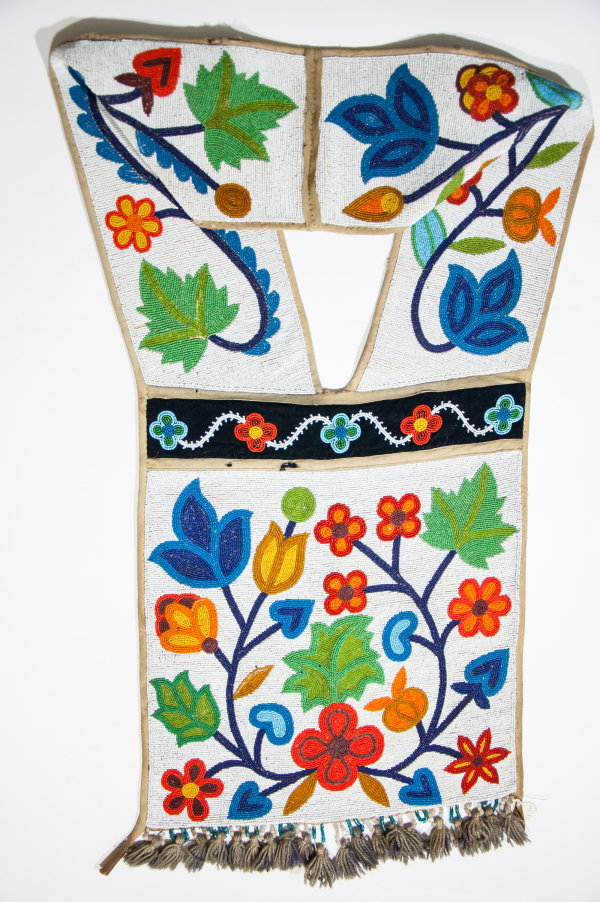
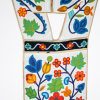
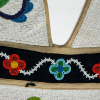
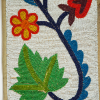
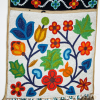
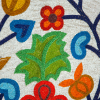
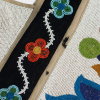
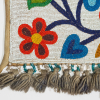
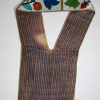
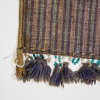
Overlay stitched floral, stem & leaf design beadwork on white field, bias tape edging, striped cotton lining, pocket non-functional, looped tube bead & yarn tassels
Original information summarized and condensed
Read More About This Relative
Fabric, cotton, flannel?, blue, white and pink striped; Fabric, velveteen, black; Binding tape, tan; yarn, faded from medium blue?; Tube beads, transparent teal & semi-transparent pearly white; Seed beads, glass, opaque white, red (transparent wine), orange (transparent yam, opaque dark orange, opaque bright orange), yellow (opaque and transparent mustard), green (opaque pear, transparent pear, transparent chartreuse), blue (opaque sky, opaque admiral, 2 shades of opaque navy).
Hand sewn and machine sewn; Overlay stitched beadwork (stitched at 2 bead intervals).
Floral, stem and leaf; 4-petalled flower; 6-petalled flower; Ragged leaf; Lanceolate leaf; Heart-shape; Maple leaf?; Fruit?.
Spirit beads -> "First Nations and Métis beadworks often intentionally positioned on or two beads out of place on a garment. Frequently they stitched an oddly coloured or shaped bead into an otherwise perfect motif. This practice reinforced the belief that only the creator is perfect" (McCord Museum, p.199)
"Bandolier bags most likely originated in the Upper Great Lakes region during the 1840s and 1850s. Fashioned exclusively from European materials and adorned with thousands of beads, bandolier bags were primarily for show, as a symbol of identity, wealth and status. Although initially functional, by the late 19th and early 20th centuries many of the bags had false pockets or none at all. Sometimes called "friendship bags", they were often created as gifts to strengthen relationships within communities or between nations. By the 1870s they had become an important element of formal dress worn mainly at ceremonies and celebrations by men, and occasionally by women. They wore them - singly or several at a time - crossed over the torso or draped around the neck. The wearing of more than one bag was generally the prerogative of a leader or a person of high honour." (McCord, 2013)
Spirit beads incorporated into beadwork. This piece is very similar to H4-11-65 in design, colours, manufacture and materials used. The provenience and donor are both the same, suggesting they have the same maker.
Provenance
McCord Museum. Wearing Our Identity. Montreal: The McCord Museum, 2013. Print.
McCord Museum. Wearing Our Identity. Montreal: The McCord Museum, 2013. Print.
About This GRASAC Record
Manitoba Museum
Content from the Manitoba Museum's catalog records. Uploaded by Orvis Starkweather as part of their summer internship.













Attributed to Northeast Great Lakes-Riverine Geo-cultural area.
 Knowledge Sharing Platform
Knowledge Sharing Platform

